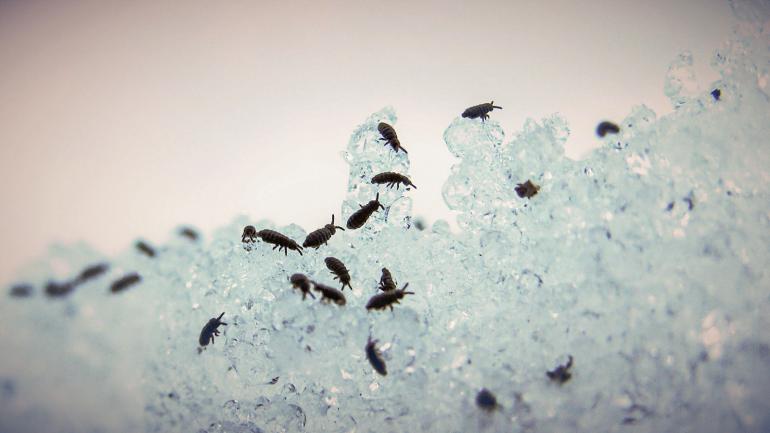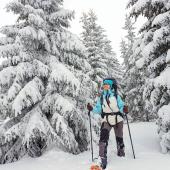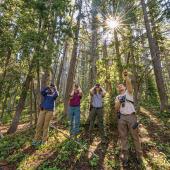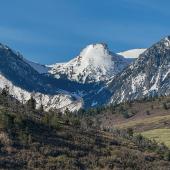To Flea or Not to Flea?
A close-up look at small but mighty snow-crawlers.
As I skinned up a slope on a warm late-winter day, I looked down at my skin track and noticed countless tiny blue-black bugs, just a few millimeters long, were suddenly swarming it. What the heck are these things? Where did they come from? Why aren’t they dormant for the winter? Will they bite me? Realizing I had no exposed skin they could access, my initial shock and concern quickly turned to curiosity, and I made a mental note to do some further investigation after my lunch laps.
Snow fleas serve an important role in natural decomposition by feeding on decaying organic matter.
It turns out I had an encounter with Hypogastrura harveyi. Also called “snow fleas” or “springtails,” they are not bugs at all—nor fleas, as the name suggests. They are hexapods that fall outside of the insect class but are related to both insects and crustaceans. The name “snow flea” originated because they resemble fleas in size and appear to make great leaps across the snow’s surface. Their leaping, however, is quite different from that of fleas—which leap with their relatively large hind legs. Springtails, on the other hand, have a special tail-like appendage called a furcula, which they can instantly unfold to launch themselves up to several inches, or 20 to 30 times their body length.
As amazing as their jumping ability is, it isn’t the most unique thing about them. Instead of remaining dormant in the winter, snow fleas rise to the surface of the snow on warm winter days to locate new food sources. This is possible because their bodies produce their own form of antifreeze by excreting a protein that’s rich in glycine—an amino acid that binds to ice crystals as they start to form, preventing the crystals from growing.
They aren’t parasites, nor harmful to humans and our pets, and do not bite. Snow fleas serve an important role in natural decomposition by feeding on decaying organic matter. If you enjoy gardening, you’ve probably even seen them before. In the warmer months, they like to sit atop rich topsoil, helping the organic matter therein become plant food and speeding along the natural cycle of life. Now that you know what they’re capable of, keep an eye out for these little natural wonders this winter. You may be surprised by all the places you’ll find them.














